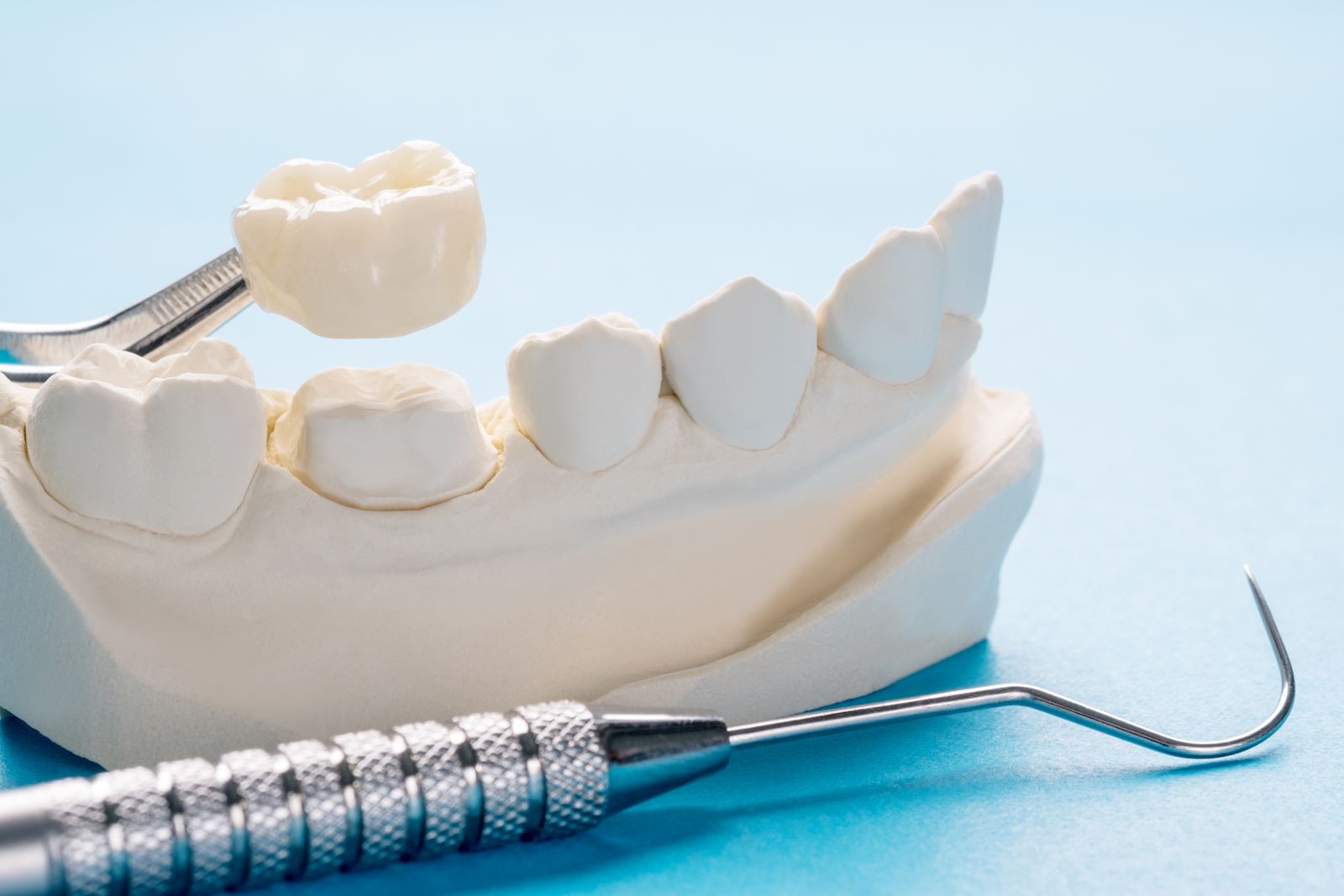What Is a Dental Crown?
posted
by Dr. Beau Beecher, DDS on 2/23/2022
in
General

Did your friend mention she’s getting a dental crown procedure next week and you had no idea what she was talking about? You might’ve politely nodded, promising yourself to google “dental crown” later. Don’t go down a two-hour rabbit hole researching the term. This article is your quick, go-to guide to understanding dental crowns. Next time someone brings it up, you’ll be in the know!
What is a Dental Crown?
If you have a damaged or decaying tooth, you might feel self-conscious or embarrassed to smile. This is where a dental crown can boost your self-confidence. Simply put, a dental crown is a tooth-shaped cap that is placed over a damaged or decayed tooth. It’s the perfect solution to make your teeth look more uniform and provide additional protection to sensitive areas.
When Do You Need a Dental Crown?
It’s natural for teeth to get damaged and worn down over time. That doesn’t mean you have to put up with not-so-great-looking teeth. If any of the following issues have changed the structure or appearance of your teeth, consult your dentist about getting a dental crown.
Dental Cavities
If a cavity is not treated, it can lead to tooth decay. Depending on the severity of your cavity, it may have eroded your tooth. Once your cavity is treated with a filling, a dental crown can cover the tooth.
Cracked or Weak Teeth
Besides cavity decay, your teeth may have cracked or weakened over time. To keep your teeth intact, a dental crown can be placed to give proper support. Dentists may also use crowns to support any artificial teeth or dental implants in your mouth.
Discolored Teeth
The most common reason for getting a dental crown is discolored teeth. Yellow, brown, or faded teeth don’t need to be the cause of embarrassment anymore. Crowns are an easy solution to getting a beautiful smile.
Types of Dental Crowns
Believe it or not, there are different types of crowns to choose from. You can even decide between full or partial coverage. There are also different materials from which your crown can be built. Depending on your tooth’s current condition and needs, your dentist will advise on the best material and crown type.
For Full Coverage: Traditional Crowns
A traditional crown covers your tooth completely. Dentists usually choose this option if your tooth is severely damaged. Traditional crowns are strong and give your weakened tooth adequate support. Some dentists may offer same-day crown procedures.
For Partial Coverage: Onlay & 3/4 Crowns
This is a good option if your tooth is mostly intact with minimum decay and erosion. Once the affected area is treated, your dentist may reshape the tooth to better accommodate the crown. Onlays and 3/4s cover the top or tip of your tooth.
For Longer Durability: Metal Crowns
Some dental patients opt for metal crowns because they last longer. Metal is less likely to wear down over time. However, most individuals don’t want metal shining from their mouth, unless it’s a fashion choice. Dental patients will ask for a more natural-looking crown to blend in with the rest of their teeth.
For Natural Look: Metal-Free Tooth-Colored Crowns
Metal-free crowns offer a natural look. They’re usually tooth-colored to match your smile. You can get a ceramic or porcelain-made crown. Some dentists also offer zirconia-made crowns which are stronger and more durable than porcelain.
Dental Crown Procedure
Depending on the coverage and crown type you need, your procedure could vary. To simplify, we’ve listed the general steps in a basic crown procedure. Procedures can be completed in two visits or sometimes in the same day.
Two-Visit Procedure
- The dentist will take x-rays to examine the specific tooth’s health. A tooth must be clean and healthy before covering it with a crown. If there’s tooth decay or cavities, additional treatment may be needed.
- The tooth is filed down (if necessary) for appropriate crown fit.
- Putty or paste is used to take a dental impression of the specific tooth and surrounding teeth. This will allow for an accurate fit.
- The tooth is covered with a temporary crown so it doesn’t get infected in between your first and second visit.
- Impressions are sent to a lab where the crown is created. It may take two to three weeks to complete.
- During your second visit, your dentist will replace the temporary with the permanent crown and ensure the color and fit are as desired.
Same-Day Procedure
If your dentist has the appropriate equipment available, your crown procedure can be completed in one day instead of waiting weeks to get a new crown. The procedure is the same with the exception of getting an impression of your teeth. Once the dentist has determined your tooth is healthy and sized appropriately, they will take the following steps for an impression.
- Digital pictures of your teeth will be taken with a scanning device.
- The scanning device creates a 3-D model design.
- Design is inputted into a second machine that carves out the crown into a finished product.
- Once the crown is completed, the dentist will place it into your mouth to ensure color and fit are as desired.
The same-day procedure is popular because it can take as little as 15 minutes. Consult your dentist on what the right choice is for you. Regardless of the procedure time, the final result should make you happy. The perfect crown should blend in and have a barely-there feel.
Dental Crown Services at Kimball & Beecher
If you’re looking to upgrade your smile with a dental crown, look no further than the Kimball and Beecher dental offices. Our experienced and empathetic dentists discuss with you the best type of dental crown for your needs. Contact your local Kimball & Beecher dental office to schedule an appointment today.